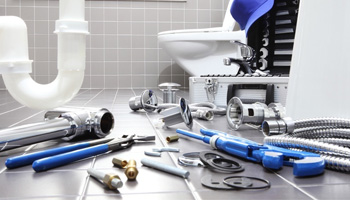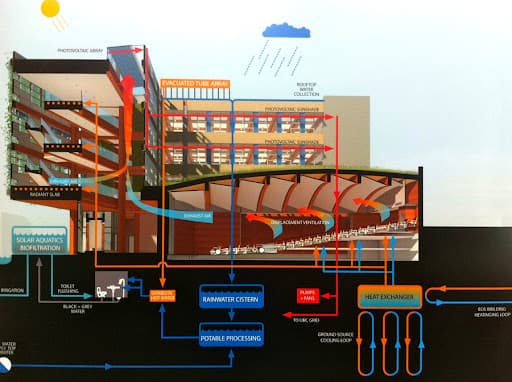The content listed below on the subject of Understanding Your Home's Plumbing Anatomy is incredibly stimulating. Read on and draw your own assumptions.

Recognizing exactly how your home's pipes system works is important for every single house owner. From delivering tidy water for drinking, cooking, and showering to safely getting rid of wastewater, a well-kept pipes system is essential for your family members's health and comfort. In this detailed overview, we'll check out the detailed network that comprises your home's pipes and offer pointers on maintenance, upgrades, and managing common issues.
Intro
Your home's plumbing system is more than simply a network of pipes; it's a complicated system that ensures you have access to tidy water and reliable wastewater removal. Recognizing its components and exactly how they collaborate can help you avoid pricey repairs and make sure whatever runs efficiently.
Basic Parts of a Pipes System
Pipes and Tubes
At the heart of your pipes system are the pipes and tubing that carry water throughout your home. These can be made from numerous materials such as copper, PVC, or PEX, each with its advantages in regards to resilience and cost-effectiveness.
Fixtures: Sinks, Toilets, Showers, and so on.
Components like sinks, toilets, showers, and bathtubs are where water is used in your home. Recognizing how these components connect to the plumbing system helps in identifying issues and planning upgrades.
Valves and Shut-off Factors
Shutoffs control the flow of water in your plumbing system. Shut-off shutoffs are critical throughout emergency situations or when you need to make repair work, enabling you to separate parts of the system without interfering with water flow to the entire house.
Supply Of Water System
Key Water Line
The major water line connects your home to the local water supply or a private well. It's where water enters your home and is distributed to different components.
Water Meter and Pressure Regulator
The water meter procedures your water usage, while a pressure regulator ensures that water streams at a secure stress throughout your home's plumbing system, avoiding damages to pipelines and fixtures.
Cold Water vs. Hot Water Lines
Recognizing the difference between cold water lines, which supply water directly from the main, and hot water lines, which bring warmed water from the hot water heater, helps in troubleshooting and planning for upgrades.
Drain System
Drain Pipes Water Lines and Traps
Drain pipelines lug wastewater far from sinks, showers, and toilets to the sewer or sewage-disposal tank. Traps stop sewage system gases from entering your home and additionally trap particles that can create clogs.
Ventilation Pipes
Ventilation pipelines permit air into the drainage system, avoiding suction that might reduce water drainage and create traps to empty. Appropriate air flow is crucial for preserving the honesty of your pipes system.
Relevance of Correct Water Drainage
Making sure proper water drainage protects against back-ups and water damage. Frequently cleaning drains pipes and keeping traps can protect against pricey fixings and prolong the life of your pipes system.
Water Heater
Types of Water Heaters
Hot water heater can be tankless or typical tank-style. Tankless heating units heat water as needed, while containers keep heated water for prompt use.
Upgrading Your Pipes System
Factors for Updating
Updating to water-efficient fixtures or replacing old pipes can boost water top quality, minimize water expenses, and enhance the value of your home.
Modern Pipes Technologies and Their Advantages
Check out innovations like clever leakage detectors, water-saving bathrooms, and energy-efficient water heaters that can save cash and lower environmental effect.
Cost Factors To Consider and ROI
Determine the in advance prices versus lasting cost savings when considering pipes upgrades. Lots of upgrades pay for themselves through lowered energy expenses and fewer repairs.
Exactly How Water Heaters Connect to the Pipes System
Understanding exactly how water heaters link to both the cold water supply and warm water distribution lines aids in detecting problems like not enough hot water or leakages.
Upkeep Tips for Water Heaters
Frequently flushing your hot water heater to get rid of debris, checking the temperature level setups, and examining for leakages can extend its life expectancy and boost power efficiency.
Typical Pipes Issues
Leakages and Their Reasons
Leaks can happen as a result of aging pipelines, loose installations, or high water pressure. Addressing leakages promptly stops water damage and mold and mildew growth.
Blockages and Clogs
Obstructions in drains and bathrooms are usually caused by flushing non-flushable things or a buildup of oil and hair. Using drainpipe screens and being mindful of what drops your drains can protect against blockages.
Indicators of Plumbing Problems to Look For
Low tide stress, slow drains, foul odors, or uncommonly high water costs are indicators of potential pipes problems that must be resolved quickly.
Pipes Upkeep Tips
Regular Assessments and Checks
Schedule annual plumbing evaluations to capture concerns early. Seek indicators of leaks, corrosion, or mineral buildup in faucets and showerheads.
DIY Maintenance Tasks
Simple tasks like cleaning faucet aerators, checking for bathroom leaks utilizing color tablets, or insulating exposed pipes in cold climates can avoid major plumbing problems.
When to Call an Expert Plumbing Professional
Know when a pipes issue calls for professional know-how. Trying intricate repair services without correct knowledge can bring about more damage and greater repair costs.
Tips for Minimizing Water Use
Easy practices like taking care of leaks immediately, taking much shorter showers, and running full lots of washing and recipes can save water and reduced your energy expenses.
Eco-Friendly Plumbing Options
Take into consideration lasting pipes products like bamboo for floor covering, which is durable and green, or recycled glass for kitchen counters.
Emergency Preparedness
Actions to Take During a Plumbing Emergency
Know where your shut-off shutoffs lie and exactly how to shut off the supply of water in case of a burst pipeline or major leak.
Importance of Having Emergency Situation Calls Handy
Maintain call details for neighborhood plumbing professionals or emergency situation solutions conveniently offered for quick reaction during a pipes crisis.
Environmental Impact and Preservation
Water-Saving Components and Devices
Mounting low-flow taps, showerheads, and bathrooms can considerably reduce water usage without sacrificing performance.
Do It Yourself Emergency Situation Fixes (When Appropriate).
Temporary solutions like making use of air duct tape to patch a leaking pipeline or placing a bucket under a trickling tap can reduce damage up until a professional plumbing gets here.
Final thought.
Comprehending the anatomy of your home's pipes system equips you to maintain it effectively, conserving time and money on repairs. By complying with regular upkeep regimens and staying educated regarding modern pipes innovations, you can guarantee your pipes system operates successfully for many years to come.
HOW YOUR PLUMBING SYSTEM WORKS
Which Pipes Do What?
Blue lines = fresh water supply entering the building Red lines = hot water supply entering the building Grey lines = pipes carrying waste away from the building and venting pipes carrying gases away from the building (through the roof) YOUR MAIN PLUMBING SYSTEMS
There are two main plumbing systems that support your home s basic plumbing needs one that brings clean water into your home, and one that sends dirty water away from your home. Connected to the toilet, bath, shower, and other faucets in your home, these two systems keep your water flowing in the right directions.
ACCESSING FRESH WATER
Fresh and clean water is brought into your home through the main water supply line . Filtered through one pipe, this water is pressured to flow into the various fixtures in your home at any given time.
This water can be sourced from a well located on your property, a pond or river (mostly cottages), or, as in most cases, from the city s municipal water treatment centre. However, it is important to note that water that is untreated, such as the water siphoned from ponds or rivers, may not be safe to drink. Personal water supplies always need to be treated for hardness and contaminants before consumed.
MUNICIPAL WATER SUPPLIES
Improve taste and odour Remove sediment Eliminate hardness Reduce chlorine COLD WATER SUPPLY VS. HOT WATER SUPPLY
Cold water flows into your home or building through the service line, which then distributes hot or cold water to your fixtures. This line is most commonly run through a central column that runs floor to floor. Hot water runs in short and straight pipes as the longer the pipeline, the more heat that will be lost in the transfer. Having shorter pipes also allows residents to access hot water more quickly.
WASTE WATER SYSTEM
Your wastewater system is divided into two parts pipes that send wastewater away from your home and venting pipes that send sewer gas away from your home. Sewage water travels through pipes that flush the water and waste towards local sewers that are operated and managed by your city or town. Most sewer systems rely on gravity to move the wastewater to where it needs to go.
The further away from your toilet or sink, the larger wastewater pipes become. This allows for waste to be disposed of from various parts of your home or business at once without pipe blockages. The angle and flow of these pipes are also essential for keeping your waste pipes clear of build up.
https://harrisplumbing.ca/how-your-home-plumbing-system-works/

As a passionate reader on The Inner Workings of Your Home's Plumbing, I think sharing that excerpt was worth the trouble. Sharing is nice. Helping others is fun. Many thanks for taking the time to read it.
Click Here